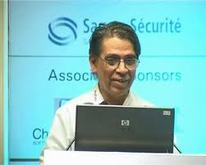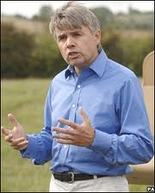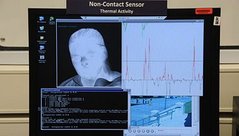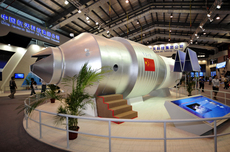 Yesterday, 23 September 2007, the Department of Science and Technology in Hyderabad plans to build up specialised cells and centres of excellence in regions such as protection for intellectual property, aiming to strengthen its outreach programme.
Dr. T. Ramasami is the Secretary of Department of Science and Technology (DST) who acts as the chairman of the sixth governing body assembly of Andhra Pradesh Technology Development and Promotion Council (APTDC) in Hyderabad. During the meeting, he said that the department had formulated national outreach programmes in major areas such as bamboo applications, intellectual property rights, and municipal solid waste. APTDC served as a centre of excellence in the State of Andhra Pradesh. He stressed the need to launch social responsibility in the technology initiatives in order to warrant the widespread benefits to all sectors of the society.
The Confederation of Indian Industry (CII) announced its plans to insure social equity in the national technology and academic property rights issues.
In partnership with the premier academic institutions in law and technology, APTDC will introduce a Certificate Training Course in IPR in order to promote skill enhancement and produce more employment opportunities. The training course will play a proactive task in technology interventions for several enterprises, ranging from small to medium enterprises.
APTDC is growing into a national centre of excellence in IPR and technology. This model attracted the interest of other states. CII has already founded the Tamil Nadu Technology Development and Promotion Centre.
 The students are challenged to be technical through the First Robotic Competition. On 5–6 April in New York, hundreds of technically attuned high school students assembled together for the 16th annual First Robotics Competition at the Jacob Javits Convention Centre.
The FIRST (For Inspiration and Recognition of Science and Technology) competition assembled together approximately 65 high school teams from Pennsylvania, New York, Connecticut, New Jersey, and a few from the UK, to display their talents as well as their robots.
The competition started early this year, when all of the teams received their kits that have same set of rules from FIRST, to construct their robot that will be presented in New York. Size and weight restrictions make sure that each of the participating teams has the same set of materials in making their robots.
With the provided kits, the teams work on their own to show of their creativity, originality, and skill in problem solving to build their perfect robots.
A number of high school students were inspired with the competition to take to their education on a new level. The students are excited about the great opportunities brought by the competition as they discover more about a field of work which they feel passionate about.
There were a lot of colleges present at the competition that offered the FIRST member participants with scholarships. There were large companies such as Johnson & Johnson, IBM, and Goldman Sachs, setting up interviews to their prospect employees.
 Dr. Paul Drayson, the recently appointed science minister of Britain who was selected by Gordon Brown, said that Britain must set up an astronaut programme in order to motivate young people to adopt science. Dr. Drayson added that the country requires major iconic challenges to prove to the young people that science offers a “wonderful life”.
Drayson had completed his Ph.D. in robotics in Aston University. "It really goes to the heart of who I am as an individual”, Drayson said. "When I was a young boy I was inspired by those great science projects - in 1969, I was nine when men first landed on the moon; it was fantastic the first time concord flew. Those things made a big difference to me. They made me want to be involved in science and technology".
Drayson said that he would support the astronaut programme in the United Kingdom. "What we need to do is to make more people at that very important age of 10 or 11 believes that they can have a wonderful life by being a part of science and technology. I've had an absolute blast in my life". Drayson was delighted for his appointment since he considers being science minister as his dream job.
Drayson’s remarks will provide a major enhancement to the campaign of the Great Britain to invest in the human spaceflight. During the 1960s, the UK government refused to consider a manned spaceflight programme on the coast grounds.
 Massachusetts' reputation in the world of technology study and improvement is currently secured, but wadding research dollars and global contest for talent pose a threat to them, based on the latest report regarding the innovation economy of the state.
The 2008 index regarding the Innovation Economy by Massachusetts Technology Collaborative shows that Massachusetts remains on top of principal technology states, as well as, markets in corporate-supported R&D. If Massachusetts were a nation, it could have ranked behind Sweden among the biggest-research-expenditure-as-a-proportion-of-its-market countries.
Massachusetts is not in harmony with its allocation of community research dollars. Massachusetts’ distribution of federal study funds has either decreased or flatlined in the last five years. Even more disturbing is the reducing labour pool once the state does not encourage young individuals to enter the field of science and technology.
The report revealed that the largest threat to the state’s outlook was the increasing educational infrastructure being formed overseas. This puts a great pressure over Massachusetts to fill employment positions with local talent.
As China and India develop accurate postsecondary organisations, the anxiety is that Massachusetts’ import of sophisticated talent for its research positions will decrease.
Only approximately 11% of the state’s secondary school seniors plan to have a college course in information or science technology, mathematics, compared with 15% in business and 26% in humanities.
Massachusetts officers are considering the recent report as proof of the possible impact of the life sciences programme by Gov. Deval Patrick worth $1 billion.
 The Homeland Security Department showed off on Thursday an early version of physiological screeners, which could spot terrorists.
The futuristic machine works on the similar theory like in polygraph. It looks sharp wings in breathing, pulse and body temperature that signal a kind of anxiety that is exuded by a would-be criminal or terrorist. The FAST or Future Attribute Screening Technology scans people walking by a set of cameras.
According to Jennifer Martin, a consultant in Science and Technology division of Homeland Security, "We're picking up things with sensors that can't necessarily be detected by the human eye".
This five-year project is the latest effort of the department to thwart terrorism through spotting suspicious people. The TSA or Transportation Security Administration has trained over 2,000 screeners to observe passengers walking through the airports, and to question those who seem oddly nervous or agitated.
The system would be fast and portable, said Robert Burns, the project manager, who envisions machines which can scan people as they are walking into airports, arenas, and train stations. According to Timothy Levine, an expert on deceptive behaviour from Michigan State University, though the machines exactly spot someone whose heart rate suddenly jumps, it may signal the agitation of learning that a flight is delayed.
"What determines your heart rate is a whole bunch of reasons besides hostile intent", said Levine. "This is the whole reason behavioural profiles don't work".
 As an effort to fill technical gap in recent years, the heads of electronic companies such as Texas Instruments, Motorola, Intel, IBM, AMD, and Samsung will meet in Brasilia on Friday.
An American company that leads in the field of integrated circuits and the Brazilian government sponsored the assembly as it aims to prompt those electronic companies to invest in Brazil.
Next Wednesday, President Lula da Silva of Brazil will also host in the Presidential Palace all of the executives, an action meant that the country is giving importance for the development of electronic technology.
Minister Sergio Rezende of Science and Technology, considered the increasing demand in the domestic market as the primary reason for Brazil to look for financial partners.
According to the Minister’s opinion, a country that has approximately 200 million people should have improved science and technology in a reasonable amount.
The Government of Brazil has taken during the last five years measures to teach technicians, give fiscal incentives, and invite foreign direct investment.
Engineers in Brazil were also given with incentives so as to meet the market demand on electronic technology.
Currently, the country has only 400 specialists.
A contract has been signed by Cadence Design Systems that allows the country to utilise the technology formed by Cadence Design Systems to manufacture integrated circuits.
According to him, the country is in the development stage of integrated circuits, and through financial support, it can take off electronic technology.
 Bill Gates, the chairman of Microsoft Corporation, had inspired and was admired by the younger generation when he delivered his speech in Beijing during his 10th visit in China. Along with his speech he offered Tsinghua University with new programmes.
Before his visit, a memorandum of agreement with the electronic and PC giants of China, Xiaxin and Lenovo, has been signed.
Science and technology is being given a strong importance by China. For two decades, the country’s science and technology has experienced a broad structural improvement. With the broad overseas study programmes and changes in its school system, China’s human resource base has been improved and expanded.
Late last year, Zogby/463 Internet Attitudes’ poll presented that 49 percent of Americans said that the “next Bill Gates” would come from India, China or Japan.
China has to promote the creation on a continuous basis of more innovations to attain a breakthrough in terms of technical standards, economic competitiveness, intellectual property, and brand building.
On Wednesday, member of the Standing Committee of the national People’s Congress, Wu Jichuan, address to the Microsoft Government Leaders Forum Asia 2007 that this year, the law on scientific and technological advances of China will be revised. To create a more market oriented, more sophisticated policy, and more globally-oriented science and technology is their goal to give way for the Chinese Bill Gates.
 The bioeconomy of China will be taking a greater leap towards development, focusing on its output in the upcoming years, chief of the country’s science and technology said yesterday.
Minister of science and technology Wan Gang reported, "The total output value of the bioindustry will reach 500 to 800 billion yuan by 2010. By 2020, the value of the segment will hit 2 to 3 trillion yuan, accounting for more than 4 percent of the country's domestic gross product”. The statement was said yesterday in Tianin during the official opening of the 2007 International Conference on Bioeconomy.
The country will carry out a three-step strategy in order to improve its science and technology department. Starting this year until 2010, as part of the first step, China will focus on technology accumulation. The second step, until 2015, will be involved in the country’s emersion as one of the world powers in technology. On the third step which will last until 2020, China will centre on upholding its position at the top.
Alongside the strategy, China has laid out 10 priorities, such as the agriculture-oriented biotechnology, marine biotech, biofuel technology, medical technology and environmental biotech, the minister stated.
China is also focusing to make productive insights in the 35 categories of the major biotechnologies, including genetic modification and stem cell, Wan added.
Wan commented that to drive bioindustry, the financing mechanism should be improved and a competent investment environment must be created.
 On 05 November 2008, the China International Aviation & Aerospace Forum was held which showcased the latest China-made gear for this year.
One of the visitors of the show was the renowned military technology fan named Huang Bo. According to him, he spent $150 or 1,000 Yuan upon his trip to Anhui province to get a look of the latest gear.
He said, “The J-10 fighter is the biggest highlight for me”. This year, when news photos proved it would be in Zhuhai, I booked my ticket immediately”.
Among these gears are the different types of Unmanned Aerial Vehicles (UAV’s).
The system engineering department director at the China Aerospace Science and Technology Corporation (CASC), Wang Weidong, stated that the medium-range CH-3 is one of the stars of China-made UAV lineup. According to him, “The vehicle has a payload of nearly 100 kg and provides a platform that can be used in the future to carry air-to-ground weapons”.
The enormous camouflaged vehicle or China's Hummer is also making its very first appearance on the show. Also, there is the WS-2 multiple launch rocket system.
An employee from the marketing department of CASC named Wang Wei said that the maximum firing range of the rocket system is 200 kilometres, a distance that only some launchers could match.
The show also launches the portable FN-16 air-defence system, which is the latest version of FN-6, with improved attack capability.
 As part of Australia’s State Government’s plan, primary school students are required to be taught about global warming as part of their curriculum.
The science and technology syllabus from kindergarten to sixth grade is being reviewed by the NSW Board of Studies which will look at detailed lessons about climate change.
The move came when the leading scientific research body of Australia appealed for the issue on global warming to be taught in the students in primary schools.
Based on the study, 70 percent of the respondents would pay more for their electricity if it would help in fighting climate change.
Almost three quarters perceived electricity as a chief contributor to emissions, more than 93 percent regard climate change as an issue that is important and approximately 90 percent consider that solar panels should be installed in homes.
One of the proposed answers to the issue is an education programme that would immediately start in primary schools.
Peta Ashworth, the senior CSIRO social scientist said, "Education campaigns like 'quit smoking' start in schools…people recognise that kids, once they get informed in the topic, will take on that learning and spread the word even further".
According to John Della Bosca, NSW Education Minister, the high school and primary school students were already taught about climate change and the environment; however, the Government is still planning to change the Kinder to sixth grade syllabus to include a specific module.
|










 RSS Feed
RSS Feed